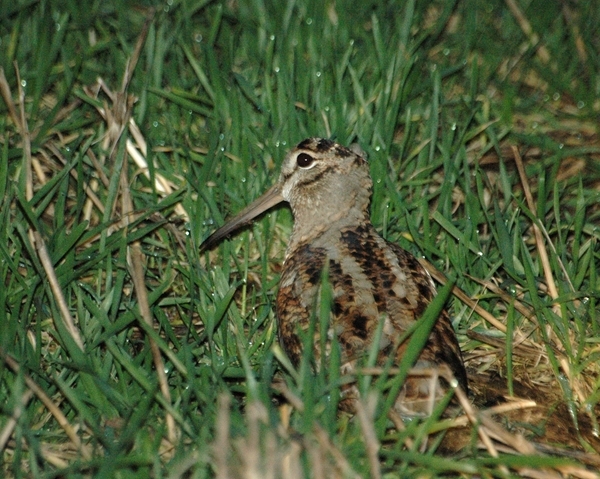
GUNS should be extra vigilant when shooting woodcock during a cold snap and allow the birds a suitable recovery period, a new study has revealed.
Woodcock experts Andrew Hoodless, Carlos Sánchez and Owen Williams have been examining the energy reserves of Eurasian woodcock, which is a popular quarry species found across Europe, for the past eight years.
As in many other birds, the woodcock faces a daily trade-off in winter: carry too little fat and it risks starving, carry too much fat and it reduces its ability to escape from predators.
Therefore, the bird ringers dissected a sample of 221 birds from shoots in Britain in winter to examine individual variation in fat stores and the relationship between fat levels and body weight.
This was followed by the use of weights from birds captured at ringing sites (1,689 captures during 2010/11-2015/16) to assess changes in mobilizable energy in relation to season and during cold spells.
Their findings, published in Journal of Applied Ecology, show that woodcock are able to store large amounts of energy as fat in mid-winter and increase energy reserves as night air temperature drops below 0°C.
This suggests that, as indicated by previous research, woodcock are able to compensate for difficult feeding conditions at night by increasing the time spent feeding during the day. Once permanently frozen conditions set in, however, the data suggests that there is the potential for woodcock to starve to death within a week. In the event of a cold spell in Britain, woodcock could, on average, make escape flights of 860 km or withstand frozen conditions without feeding for six days.
To reduce the effects of cold weather on woodcock, shooting should be restricted before energy reserves are depleted.
“We suggest that shooters across Europe should adopt a more cautious approach to shooting woodcock in cold weather,” said Dr Hoodless, who is head of wetland research at Game & Wildlife Conservation Trust.
“They should stop after four days of frozen conditions and allow the birds at least seven days to recover after the end of the cold period before shooting recommences.
“We think statutory authorities across Europe should adopt a consistent approach and consider a regional system for an alert advising cessation of woodcock shooting after four days of frozen conditions across an appropriate range of inland sites. “Shooting organizations and hunters’ clubs could play an active role, especially through social media, in quickly raising awareness of adverse conditions and promoting good practice.”
Director of the Woodcock Network Mr Williams and Dr Sánchez who is director of research at Fundación Artemisan wrote the paper with Dr Hoodless.
You can read more about this study on a new blog here, written by Dr Hoodless.
In addition, you can also view the article published in the Journal here.
Notes to editors
The Game & Wildlife Conservation Trust – providing research-led conservation for a thriving countryside. The GWCT is an independent wildlife conservation charity which has carried out scientific research into Britain’s game and wildlife since the 1930s. We advise farmers and landowners on improving wildlife habitats. We employ more than 60 post-doctoral scientists and other research staff with expertise in areas such as birds, insects, mammals, farming, fish and statistics. We undertake our own research as well as projects funded by contract and grant-aid from government and private bodies.
For information, contact:
Eleanor Williams
Telephone: 07592 025476
Email: press@gwct.org.uk